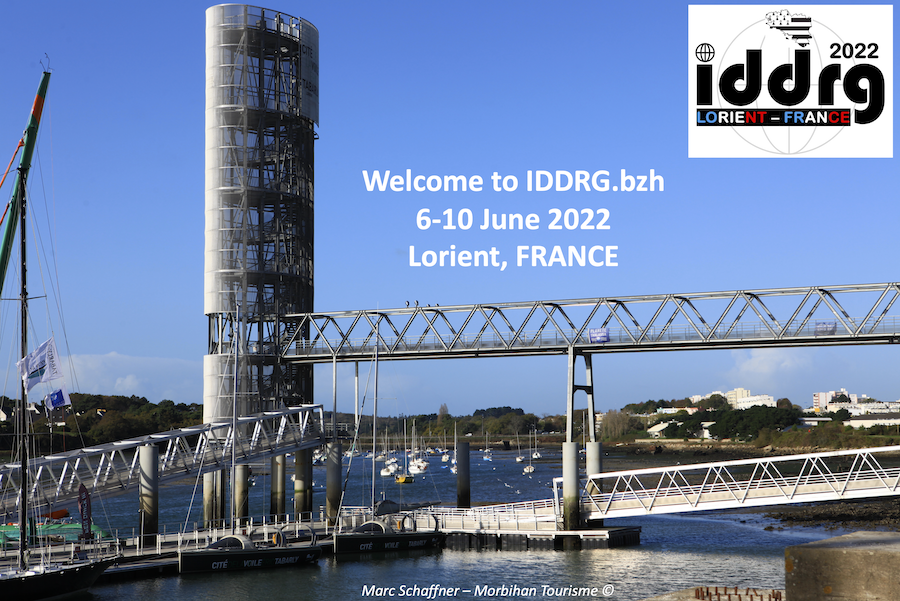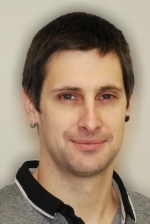|
|
|
Conference programme > Plenary speakers
Sheet metal forming at elevated temperature (moreless)
The paper intends to review the most recent research works carried out in the framework of sheet metal forming processes at elevated temperature. The increasing demand of high strength-to-weight ratio components in different sectors, such as the automotive and aerospace ones, has recently pushed a more and more remarkable development of forming processes that involve the heating of the sheet at such temperatures to assure not only enhanced formability characteristics, but also microstructural features that can improve the component in-service properties. The focus of the paper will be on: i) variants of the hot stamping process carried out on high-strength steel sheets to tailor the part characteristics; ii) hot stamping of high-strength aluminum alloys combining or not heat treatments to harden the part; iii) hot stamping of titanium alloy sheets to increase their room temperature poor formability, avoiding the low productivity of creep ageing forming and isothermal warm forming processes.
The AutoForm Pareto Principle effectively defines the Digital Process Model (moreless)
An efficient automotive product development cycle requires data inputs to effectively manage the stamping process. We will explore how to effectively define a digital process model based on the AutoForm Pareto Principle. This concept provides guidance on the impact of different parameters on the simulation result and suggests an engineering-based model building process. It helps to systematically build a consistent and accurate simulation model. This principle can also be applied on specific models, an elaboration on the modeling of drawbeads will be given. The final state of the model represents the future reality of the stamping process.The accuracy footprint has been applied to validate whether the physical setup and the simulation setup match. This matching setup is a prerequisite for obtaining identical results in reality and in simulation. The application of the accuracy footprint and the link with the AutoForm Pareto Principle will be illustrated on three use cases.
Friction and contact modelling for sheet and tube forming processes. Review of experimental characterization techniques and industrial examples (moreless)
In the last decade, great progress has been made in the development of friction characterization techniques and friction modelling for forming applications. All these research activities have demonstrated that friction is a one of the most important parameters for manufacturing processes and to guarantee a robust and stable production. The keynote will review the existing friction and contact characterization techniques that emulate the tube and sheet metal forming processes, including the hot stamping and hot forming processes. Examples of different friction and contact tests will be shown and the influence of most affecting experimental parameters will be analysed. All the experimental characterization work will be linked with laboratory scale and industrial use cases, taking advantage of our applied nature and our industrial roots, trying to motivate the forming community to use advanced tribological laws that increase the reliability of the simulation software.
AI-based surrogate models for crash simulation applications (moreless)
A machine learning based strategy for creating parametric surrogate models from parametrized finite element model simulation results is proposed. The surrogate models enable efficient real-time exploration of the structural response within the defined parametric space. Several applications are presented, including the analysis of parametrized vehicle crash models and the fast identification of material model parameters. The proper treatment of varying mesh topologies requires special attention. A corresponding methodology is presented and applied for various academic and industrial examples.
Impact of CO2 constraints on industrial sheet metal forming (moreless)
Today's global demand for rapid CO2 reduction will have a lasting impact on many industrial manufacturing processes. In the field of forming technology, new processes are being discussed, ranging from the possibilities of green steel production to the integration of the circular economy of materials. Traditional sheet metal forming will be directly affected by these changes in many ways. In the main application field of mobility, the traditional sheet metal body-in-white will tend to change to space frame structures with cast components. With the change to e powertrains the thick sheet metal parts applied in automatic gear boxes could disappear completely. If, on the other hand, PEMFC technology prevails in the long term, it will be metallic bipolar plates, for example, which will require high-precision microforming. This presentation will discuss individual aspects of this technology change as well as the need for further developments of the digital planning tools for such new technologies.
An Advanced Artificial Intelligence Framework to Simulate Metal Forming Processes (moreless)
In modern automotive engineering, vehicles are primarily designed in the virtual space to enable a rapid vehicle design process. This can lead to rapid improvements in vehicle design as more design cycles may be performed. However, this process is heavily constrained by the time and computational requirements necessary to generate the vast number of simulations conducted for vehicle design. Fortunately, modern artificial intelligence (AI) techniques may be used to drastically accelerate the generation of new simulation results. This work presents, for the first time, an advanced recurrent deep learning framework capable of predicting the entire simulated stamping response for new geometries, materials, and process parameters. The predicted response is compared to simulated finite element models demonstrating significant reduction in prediction time while maintaining high accuracy in key performance indicators of the stamping process. Finally, this work also highlights how this framework may be leveraged to further improve metal forming processes.
Significance of microstructure effect in constitutive modeling for sheet metal forming simulations and applications (moreless)
Emerging metal sheets show complex mechanical behavior from their microstructural complications. The characteristics of mechanical responses include anisotropy in yielding and hardening, asymmetry in flow stress, and enhacned or reduced formability. For example, advanced high strength steels exhibit significant anisotropy in hardening under strain path changes, and magnesium alloys have strong strength differential between tension and compression. Evolutions of microstructure during forming and effect of foreign elements have drawn attentions in sheet metal forming. The examples are strengthening of martensitic steel under hot forming, and degraded formability under hydrogen environment, respectively. For accurate descriptions of these complex behaviors, advanced constitutive models and numerical techniques have been developed and applied to process optimization. In this talk, applications of constitutive models from understanding the complex behaviors in relation to the microstructure are presented. Additionally, the computational framework for modeling process-properties-microstructure relationship, which helps engineers design better performance sheet metals, is briefly introduced.
Mechanical joining of high-strength multi-material systems– trends and innovations (moreless)
Mechanical joining processes play a key role for the realization of multi-material lightweight structures, which are essential with regard to environmental protection. However, joining of dissimilar high-strength materials is challenging due to the varying properties of the joining partners and due to their high flow stresses and often limited ductility. Thus, the evolution of established processes as well as the development of innovative and highly productive joining technologies are necessary. Requirements for a highly volatile production environment are versatility, flexibility, resilience and robustness. In this context, current trends and innovations regarding mechanical joining processes for enabling the material mix are presented.
Creating Big-Data on Sheet Metal Plasticity and Failure (moreless)
The success of machine-learning based constitutive modeling partially hinges on the availability of meaningful experimental data for model identification. To reduce the costs of mechanical experiments, robot systems are developed that operate either autonomously or with minimal human intervention. A fully automated universal testing machine for characterizing the plasticity and fracture response of sheet metal is presented that integrates stereo-DIC and IR temperature measurements. Furthermore, a fully-automated Nakazima testing system is introduced to obtain FLCs for different material orientations and non-proportional loading histories. In addition, the automation of a split Hopkinson bar system for high strain rate testing is discussed. Aside from using big data for machine-learning based constitutive modeling, the value of extensive experimental results for conventional material modeling approaches is shown.
The Virtual Fields Method for anisotropic plasticity: a Material Testing 2.0 perspective (moreless)
Camera-based deformation measurements, like Digital Image Correlation (DIC) and inverse identification techniques like finite-element model updating (FEMU) or the Virtual Fields Method (VFM) are now mature technologies. The challenge ahead of us is to combine these technologies in our engineering processes to benefit from the multiple advantages they offer like the possibility to reduce the number of material tests and provide a more robust calibration of models. The shift from simple tests like uniaxial tension or bending to more heterogeneous tests using DIC and FEMU/VFM has been coined Material Testing 2.0 (MT2.0).The presentation will provide an overview of the state of the art of MT2.0 for anisotropic plasticity, with a particular focus on the use of the VFM. Advantages and limitations will be highlighted, and an outlook of future work will be provided, with a particular focus on test design and standardization.
Steel as a carbon neutral material of choice: towards local decarbonized steel production in Europe (moreless)
As core material of major industry sectors, being building, mechanical engineering, automotive, or packaging, how to ensure that steel will decarbonize its production footprint to remain a sustainable solution for its customers? What are the technological alternatives to decarbonize steelmaking? With circularity constrains developing, how to ensure a local production to prevent carbon leakage and keep current supply versatility? What are the regulatory, political, and energetical challenges to make steel production sustainable in Europe? How to ensure that all current market need will well be covered despite massive production technologies changes? Sustainability credentials, what is the pathway towards carbon neutral or “Green” steels? These are the questions we will try to answer in this lecture, giving a steelmaker point of view. .
|













